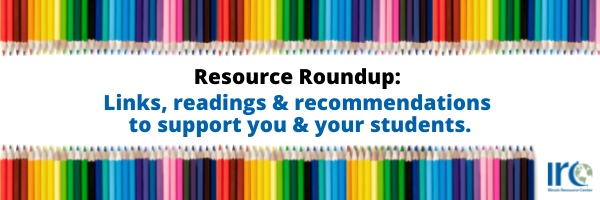 Over the past few months, the IRC has asked members of our community to nominate Illinois teachers working with multicultural, multilingual students who are going above and beyond, and now, we’re celebrating them and highlighting their work. Keep an eye out for these features in the coming months – and if you’d like to nominate someone, email leanet@cntrmail.org. Next up is Xiomara Bustamante, a biliteracy coach at J.S. Morton High School.
Over the past few months, the IRC has asked members of our community to nominate Illinois teachers working with multicultural, multilingual students who are going above and beyond, and now, we’re celebrating them and highlighting their work. Keep an eye out for these features in the coming months – and if you’d like to nominate someone, email leanet@cntrmail.org. Next up is Xiomara Bustamante, a biliteracy coach at J.S. Morton High School.
Says Ana Castellanos, who nominated her: Xiomara is the Biliteracy Coach in our building and I have yet to meet a more dedicated and passionate for ELL students professional. She is respected and seen in high regards by all teachers in our building and as our ELL population exponentially increases we are seeing more teachers looking for Xiomara’s guidance and approach to teaching these students.
Aside from coaching teachers at the Morton West building, Xiomara presents professional developments with the other bilingual and instructional coaches at district level. She brings the newest research and application methods to us constantly. She is also involved in various school initiatives and programs, works tirelessly with teachers, staff, and ultimately brings the best to our ELL population. She does all this with poise and dedication and we are very grateful to have her in our school!
Xiomara Bustamante calls herself an “EL for life.”
Bustamante, who arrived in the U.S. at 10 years old, relates to the multilingual students she works with at J.S. Morton High School because she has been in their shoes as an English learner, and says she is still learning. One area she particularly related to her students? The struggles of ACCESS testing.
“I remember taking the ACCESS test, and not really knowing what it was or seeing the results or understanding what I was taking,” she says. “Students have test fatigue. They just see ACCESS as another test that’s not going to impact them. It happened to me, and I saw the disconnect in our students as well.
So Bustamante decided to do something about it. She initiated a committee to prepare students with information and tools to succeed in ACCESS testing, beginning with an incentive program where students who who improve their composite score by .5 are recognized with a celebratory lunch and students who meet the exit criteria of 4.8, not only exit the program, meet the Seal of Biliteracy English criteria and earn a ticket to Six Flags! “We really want everyone to feel celebrated and recognized for their improvement, as they continue to develop their English proficiency,” she says.
But more than providing that incentive to motivate students to put effort into ACCESS testing, Bustamante wanted to ensure the ACCESS test had purpose for students. She targeted EL teachers and students and invited them to an informational session, and prepared a presentation specifically for students, about the purpose of the test and the benefits to making an effort in it.
“We talked about the language survey,” she says. “Because your families checked this box, this whole process started. So we talked about that during the presentation, what the scores mean and we even had them reflect on their previous scores.”
Students were able to log in, view their scores for the past three years and set some goals for the next round of testing. “A lot of them realized they could have exited in eighth grade,” she says. “They were so close, but then they stopped trying. Their effort in taking the test was not matching their actual language proficiency and then we had them reflect on what are you going to do next time.”
Bustamante has also been working on a pathway for students to earn the Seal of Biliteracy by their senior year, and tied ACCESS to the Seal of Biliteracy and the prospect of earning college credit hours, saving time and money.
“It gave students purpose learning about the benefits they have access to for being bilingual, but also teachers who attended the session also learned about the ACCESS test, how to support their students with targeted activities and motivate them to reach their full potential,” she says.
And Bustamante engages and builds community beyond ACCESS testing. She also has organized committees for programming and initiatives to ensure students are celebrated during Hispanic Heritage Month, Black History Month and other heritage months. This year, the committee kicked off Hispanic Heritage Month during school by inviting students to play Lotería on their lunch hour, and another day, there was music and dancing in the lunchroom. “As soon as that Caballo Dorado song plays, everyone’s up and dancing,” she says.
And that culturally responsive programming and building extends to teachers. Bustamante and the Biliteracy and Instructional Coaching Team hosted “Colores y Cultura: Celebrating Hispanic Heritage Month with Educators,” a churros and coffee event before school for teachers, where everyone could collaborate and celebrate culture and come together.
Her advice for educators? Remind students every day that being bilingual is a super power and something to be extremely proud of, get to know students on a personal level, and show empathy. “Be the teacher you needed when you were in school,” she says.


